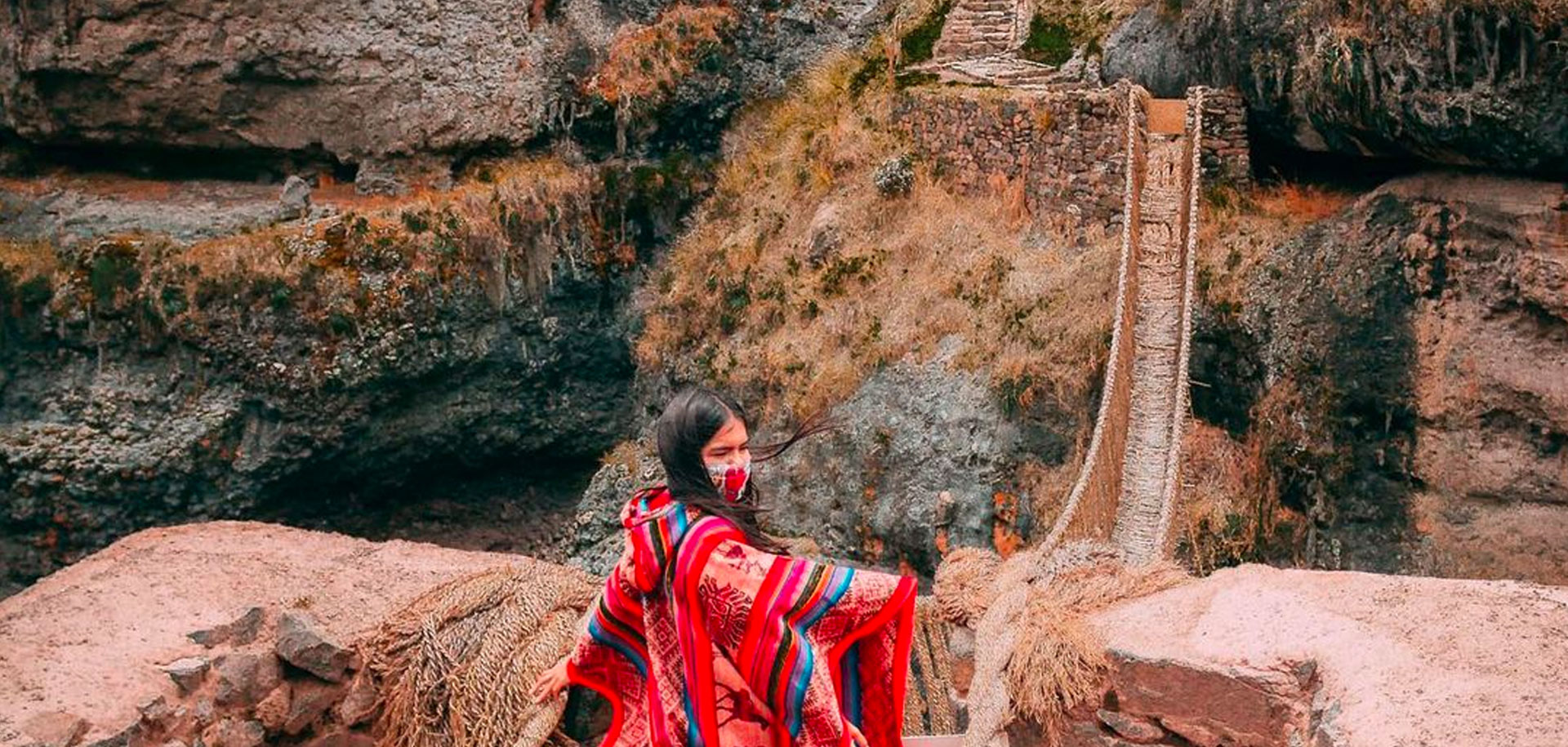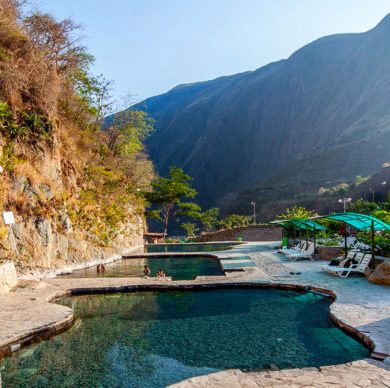QUESWACHACA THE LAST INCA BRIGDE
QUESWACHACA THE LAST INCA BRIGDE
Queswachaca means Queswa rope and Chaca bridge, Qeswachaka is the last Inca bridge that we have today.
Its construction is made of ropes called makys, which are two 3-inch diameter ropes braided into a single unit. The lower strings are called turus, the base of the bridge, they are 3 2-inch strings by a unit of braces or pedants that respond, covering the space of makys and turus with an inch spaced or separated in inches and finally the board or Chaucabamba that correspond to the surface of the circle of the walkers and are confirmed with tissue. Vegetable trunks of alternating fiber called Guayapos, two inches in diameter in length.
The bridge measures 28 meters long and 1.20 meters wide, its structure is basically made of long braided ichu trips.
Every June 1st they hold a party so they will renew the Queswachaca bridge. The first day they collect the plant fiber called ichu, the second day they braid the plant fiber, the third day they begin with the bridge built, before starting the expedition of the bridge, they make the payment to the land, the Pacco or priest makes an altar of cloth, with an indigenous motif where they deposited coca leaves, llama fetus, sweets, flowers, metals and more, on mother earth the Pachamama, to begin the renovation of the bridge the Apus, and the Pachamama, this payment is given to them to the Apus to implore protection and avoid accidents during the renovation of this Inca bridge, this festival is a tradition for the communities of Huachiri, Chaupibamba, Cochauihua, Quechua, these 4 communities are in charge of the renovation and construction of the bridge each year, and If they do not do it well, they will have the wrath of Pachamama, and of the apus, and thus avoid suffering catastrophes in nature that could ruin agriculture, even avoid diseases, they say that women should stay away from the construction of the bridge, that task reserved only for men, why it is said that women bring (qencha) or bad luck, that could perhaps spread during this ritual, the fourth and last day of celebration dedicated to celebrating the construction of the Queswachaca bridge.
four lagoons
The circuit of the four lagoons is 107 km away. From Cusco to the province of Acomayo, this corridor of the 4 lagoons begins with the Pomacanchi lagoon with an area of 2,120 hectares. and is 140 meters deep
Acopia, this lagoon is famous for the home of Valeriana Huillca Condori most known has Valicha, that served as a fountain of inspiration composer Miguel Angel Hurtado, for the creation of the huayno, Valicha recognized and sing all over Peru, this lagoon is over 3,700 m.s.n.m.
Lagunas Asnacocha is the third lagoon, the meaning of the asna lagoon is stinky or smelly and cocha lake or lagoon, in the water of this lagoon there are algae and when heated by the sun they release a very peculiar smell, this lagoon is located at 3800 meters of altitude.
Pampamarca lagoon is the last lagoon in the four lakes, in this lagoon raise trout, pejerrey, in all the lagoons exist different faunas, like parihuanas, small little chickens, Andean ducks, etc.
Pabellon Vulcano
This small Vulcano it has 4mts diameters, and ubicated in the town of Pabellones, of the district of Tungasuca, this small Vulcano calls the attention from visitors’ local people for there singular size, that it’s considered for as smallest Vulcan.
















